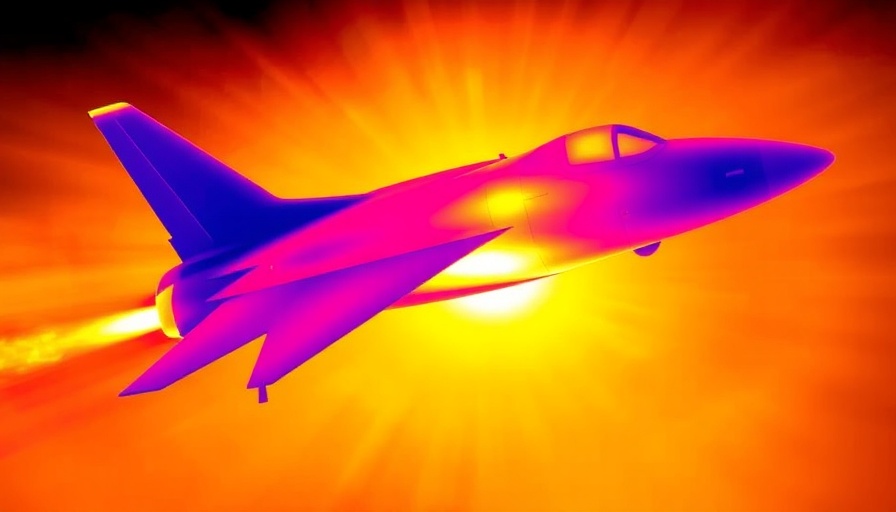
A Stellar Achievement in Aeronautics
The recent flight of Boom Supersonic's XB-1 jet has marked a significant milestone in the evolution of civil aviation. On February 10, 2025, the XB-1 flew through the skies over the Mojave Desert, producing a remarkable Schlieren photograph that captures the shockwaves visible behind the aircraft as it broke the sound barrier three times. This snapshot not only highlights the technical prowess of Boom Supersonic but also signifies the dawn of a new age in air travel where speed and sustainability go hand in hand.
The Magic of Schlieren Photography
Schlieren photography is a specialized technique that visualizes changes in air pressure, providing a dramatic image that reveals phenomena often invisible to the naked eye. Originally developed in the 19th century by August Toepler, this technique has evolved and found applications in modern aeronautical engineering. For the XB-1's test flight, NASA and Boom Supersonic collaborated, utilizing ground telescopes to capture the moment the jet eclipsed the sun, creating a stunning visual of the air dynamics that occur during supersonic flight.
Breaking Barriers without a Sonic Boom
A key concern in supersonic aviation has traditionally been the sonic boom, a loud noise produced when an aircraft exceeds the speed of sound, which has historically restricted flight paths over populated areas. However, the data collected from the XB-1 flight indicated that there was no audible sonic boom reaching the ground, a significant breakthrough. This opens up the potential for future commercial supersonic aircraft like Boom Supersonic's upcoming airliner, Overture, to operate more freely across the continental U.S., promising travel times that could be reduced by up to 50%.
The Future of Civil Aviation
With the completion of the XB-1 series of test flights, Boom Supersonic is poised to take the next step in its evolution: the development of the Overture airliner. This upcoming model aims not just for speed but also prioritizes sustainable aviation fuel in its design, striving to be environmentally friendly while enabling rapid global connectivity. The Overture’s production will ramp up with plans to build 66 units annually at their new factory in Greensboro, North Carolina, responding to a growing demand from airlines like United and American Airlines.
Conclusion: A Leap Towards Future Innovation
The accomplishments surrounding the XB-1 flights showcase innovative technologies that challenge the norm in aviation. As the aerospace industry shifts toward sustainable and efficient travel, the ability to design aircraft that can fly faster without disturbing noise pollution represents a significant step forward. With advancements in technology and collaboration among key players, we are witnessing a revolution in air travel that promises to make the skies more accessible than ever before.
 Add Row
Add Row  Add
Add 




Write A Comment